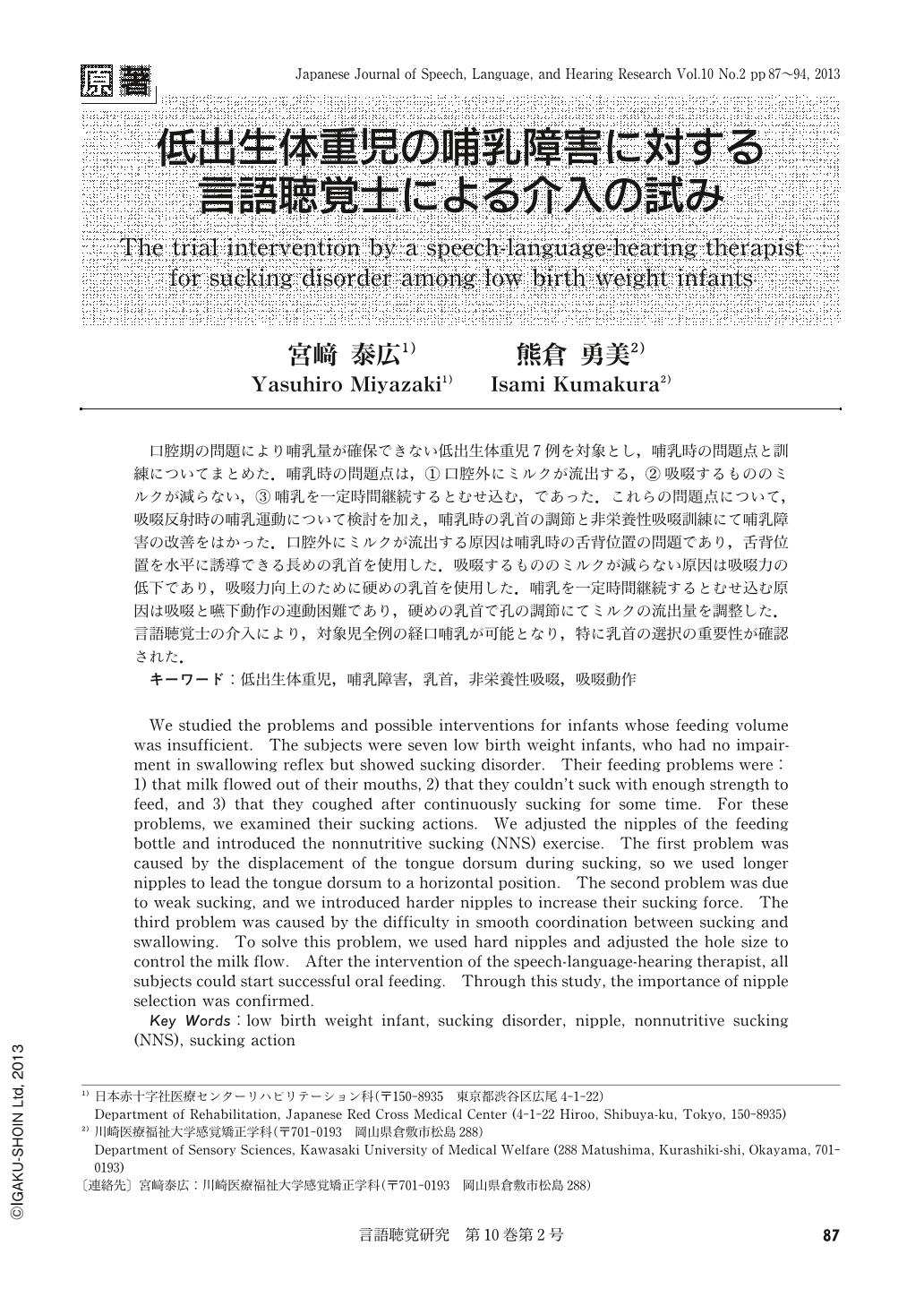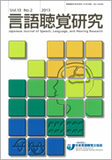Japanese
English
- 有料閲覧
- Abstract 文献概要
- 1ページ目 Look Inside
- 参考文献 Reference
口腔期の問題により哺乳量が確保できない低出生体重児7例を対象とし,哺乳時の問題点と訓練についてまとめた.哺乳時の問題点は,①口腔外にミルクが流出する,②吸啜するもののミルクが減らない,③哺乳を一定時間継続するとむせ込む,であった.これらの問題点について,吸啜反射時の哺乳運動について検討を加え,哺乳時の乳首の調節と非栄養性吸啜訓練にて哺乳障害の改善をはかった.口腔外にミルクが流出する原因は哺乳時の舌背位置の問題であり,舌背位置を水平に誘導できる長めの乳首を使用した.吸啜するもののミルクが減らない原因は吸啜力の低下であり,吸啜力向上のために硬めの乳首を使用した.哺乳を一定時間継続するとむせ込む原因は吸啜と嚥下動作の連動困難であり,硬めの乳首で孔の調節にてミルクの流出量を調整した.言語聴覚士の介入により,対象児全例の経口哺乳が可能となり,特に乳首の選択の重要性が確認された.
We studied the problems and possible interventions for infants whose feeding volume was insufficient. The subjects were seven low birth weight infants, who had no impairment in swallowing reflex but showed sucking disorder. Their feeding problems were:1) that milk flowed out of their mouths, 2) that they couldn't suck with enough strength to feed, and 3) that they coughed after continuously sucking for some time. For these problems, we examined their sucking actions. We adjusted the nipples of the feeding bottle and introduced the nonnutritive sucking (NNS) exercise. The first problem was caused by the displacement of the tongue dorsum during sucking, so we used longer nipples to lead the tongue dorsum to a horizontal position. The second problem was due to weak sucking, and we introduced harder nipples to increase their sucking force. The third problem was caused by the difficulty in smooth coordination between sucking and swallowing. To solve this problem, we used hard nipples and adjusted the hole size to control the milk flow. After the intervention of the speech-language-hearing therapist, all subjects could start successful oral feeding. Through this study, the importance of nipple selection was confirmed.

Copyright © 2013, Japanese Association of Speech-Language-Hearing Therapists. All rights reserved.


